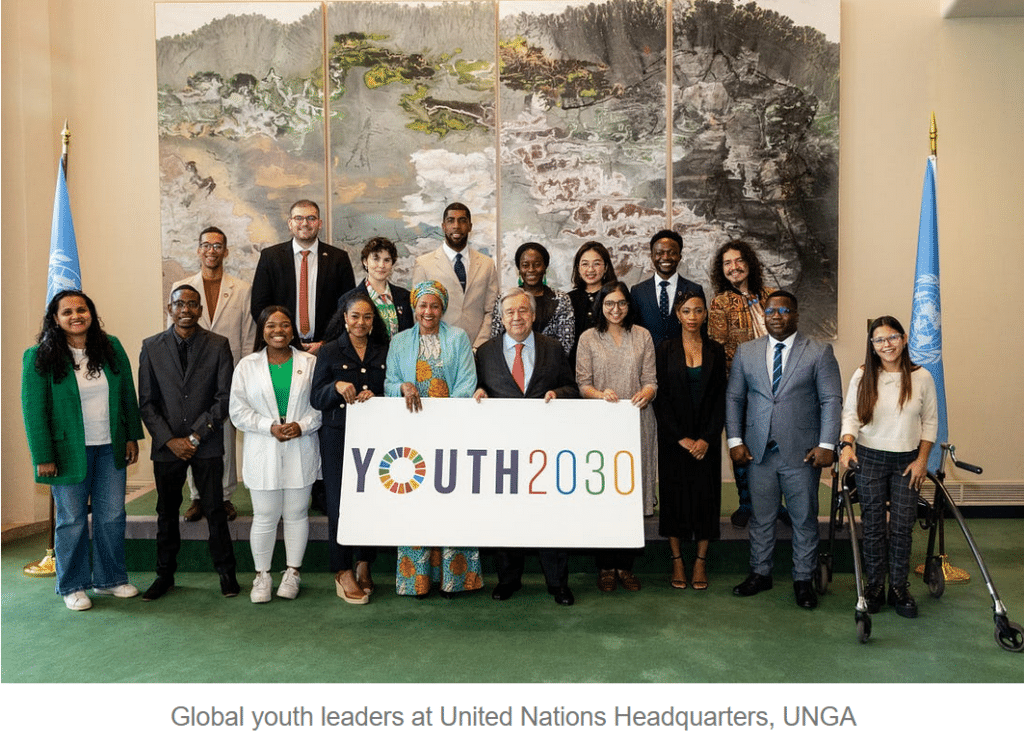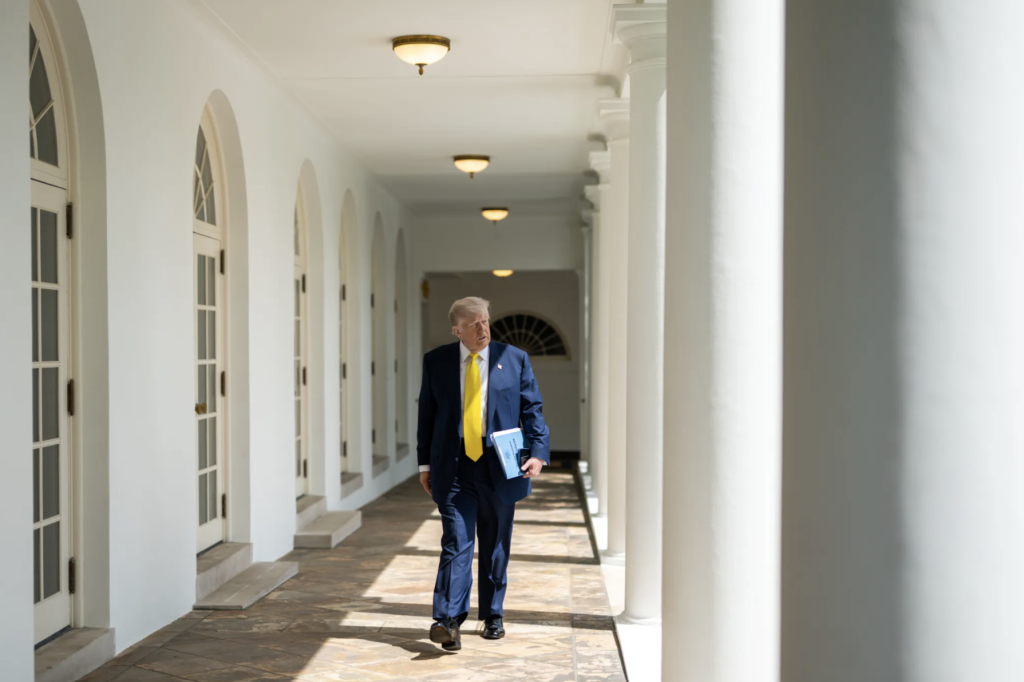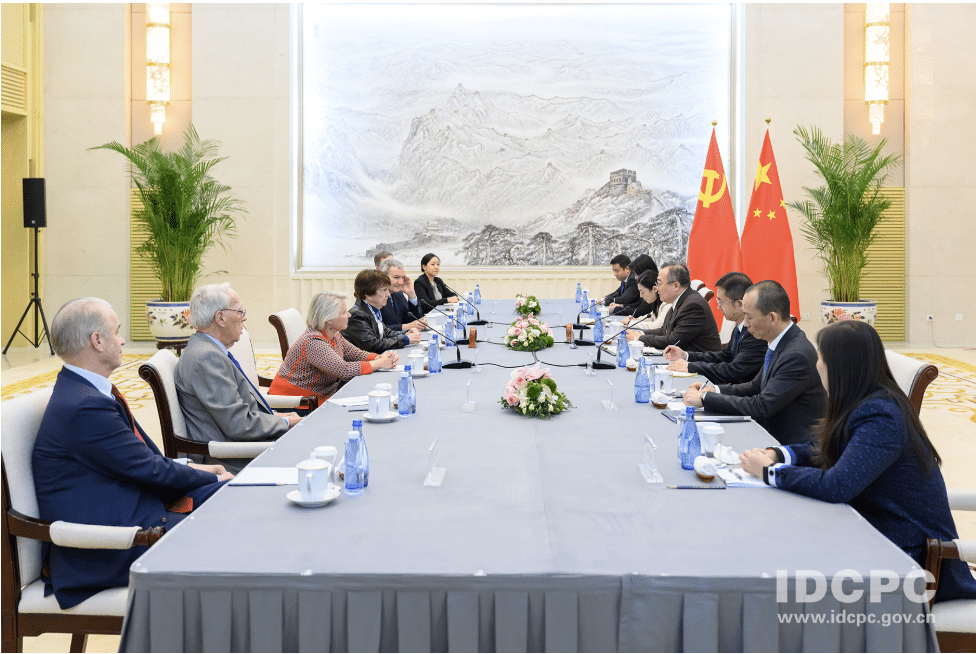Interview with Rana Mitter: How China’s WWII Memory Fuels New Nationalism
Why Polarization Won’t Stop Washington’s New Bipartisan Consensus on China
- Analysis
 Christopher Carothers
Christopher Carothers  Taiyi Sun
Taiyi Sun- 10/19/2023
- 0
This analysis draws on Dr. Christopher Carothers’ and Dr. Taiyi Sun’s recent peer-reviewed article, ‘Bipartisanship on China in a Polarized America’, in International Relations, accessible here. Dr. Carothers is the Deputy Chair of East Asia and Pacific Area Studies at the Foreign Service Institute. His personal website can be found here. Dr. Sun is an assistant professor of political science at Christopher Newport University. His personal website can be found here.
The views expressed herein are solely the authors’ and do not necessarily reflect those of the U.S. Government.
The need for the United States to counter and outcompete an increasingly assertive People’s Republic of China (PRC) has emerged as a rare point of agreement between Democrats and Republicans in recent years. This poses interesting questions about U.S. foreign policy towards China. Is this new China consensus substantive enough to produce meaningful legislative action? Or, as some critics argue, is this consensus partial at best? Moreover, why has bipartisanship emerged on China when political polarization undermines cross-aisle cooperation in so many other areas?
Our recent article, ‘Bipartisanship on China in a Polarized America,’ published in the peer-reviewed journal International Relations, addresses these questions by systematically analyzing China-related legislation and U.S. legislators’ messaging to citizens about China on social media over the last decade. We find that the new China consensus has led to a sharp increase in consequential China-related legislation obtaining bipartisan support. Moreover, we argue that this bipartisan trend emerged largely in 2017–2018 in response to developments that convinced U.S. lawmakers of the PRC’s growing threat—geopolitical, economic, and ideological—to U.S. predominance in the international order.
The Evolution of China Legislation
America’s intense political polarization has stymied productive cooperation on many political issues and it would be unsurprising if such polarization stymied China policy as well. In a recent Foreign Affairs article, “The Dysfunctional Superpower: Can a Divided America Deter China and Russia?,” Robert Gates makes this case, arguing that fractured elites have failed to convince America of the China threat and articulate a long-term strategy to counter it. Certainly, Democrats and Republicans frequently blast each other over China policy. Democrats criticized the Trump administration for launching a damaging trade war, treating Taiwan as expendable, and ceding global leadership to the PRC in various areas. Republicans hit back by accusing Democrats of being “soft on China”—a key line of attack against President Biden.
Recent academic studies point to a polarized America not unifying over China. One study argues that polarization in government weakened the implementation of President Obama’s “pivot to Asia.” Another finds that, unlike the Soviet Union during the Cold War, the rising threat perception of China has not had a unifying effect on American public opinion. Moreover, the Chicago Council on Global Affairs published a report entitled “Republicans and Democrats Split on China Policy” based on a public opinion survey fielded in late 2021.
Yet, our data show that Democratic and Republican lawmakers are undeniably cooperating more on legislation aimed at countering and outcompeting the PRC. First, since 2019, there has been a boom in China bills obtaining strong bipartisan support, which our study quantifies. Second, many of these bills go beyond just “making a statement” to mandate that government agencies take concrete and sometimes expensive action. And third, new China bills are not limited to any one issue area in the bilateral relationship, but rather reflect a need to counter and outcompete the PRC in five broad areas: trade and investment, human rights, technology, diplomatic and military affairs, and public health and the environment.
Arguably, the most consequential piece of legislation is the $280 billion CHIPS and Science Act, which passed with some bipartisan support and was signed by President Biden in August 2022. Among other goals, the act aims to increase U.S. competitiveness with China in science and technology and to counter the PRC’s growing geopolitical influence globally. Figure 1 from our paper shows the growth in bills focused on China obtaining support from at least 10 percent of legislators of both parties in at least one chamber. (Nearly all of these also received support from 25 percent of legislators of both parties.) Our data covers the 113th through 117th congresses (2013 – 2023).

Figure 1 also shows the shift to legislation that mandates substantive government action, going beyond symbolic gestures or narrow measures. Consider the contrast between two human rights bills. H. Res. 337 in the 114th congress, on Tibet, “encourages” dialogue, “raises concerns,” and “affirms” the Dalai Lama’s desire for negotiation, among other expressions of the U.S. position on the issue. But S. 3744 (116th), the Uyghur Human Rights Policy Act, imposes sanctions on individuals and entities responsible for human rights abuses, including “property-blocking” and “visa-blocking” sanctions.
Based on the Congressional Research Service and legislation summaries on GovTrack.us, we found that there were 638 bills related to China introduced into Congress during the 113th through 117th congresses. Although the vast majority did not become law, tracking the topics of the bills allows us to map the terrain of the U.S.-China relationship as seen by American lawmakers. See Figure 2 below.

China bills in all five main areas are winning more bipartisan support than before. The Asia Reassurance Initiative Act, The Hong Kong Autonomy Act, The Secure 5G and Beyond Act, The Secure and Trusted Communications Networks Act, the Holding Foreign Companies Accountable Act, the CHIPS Act, and many others have passed with cross-aisle support and collectively have led to a sea change in how American institutions engage with the PRC. The wide coverage of China legislation shows that the new China consensus is not limited to any one subset of issues.
Origins of the New China Consensus
To explain why U.S. legislators are now cooperating to get “tough on China,” our article in International Relations examined both the legislation they produced and their messaging about China on social media. We collected and analyzed all of the tweets by members of the Senate Foreign Relations Committee and a random sample of 12 other senators that mentioned China during the 113th through the 117th congresses. By searching for any of the following keywords— “China,” “Chinese,” “Xi,” “Chinese Communist Party” or “CCP,” and “Taiwan”—we identified 3860 tweets by 30 Democratic senators and 33 Republican senators (Republicans replaced more members on the committee over the years).
Similar to the rise of China bills obtaining bipartisan support, we find that both Republican and Democratic senators sharply increased their tweeting about China since around 2018–2019. Figure 3 shows this trend.

Senators’ tweets have been overwhelmingly negative, often arguing that the PRC is growing more powerful and poses a threat to the United States and its position of global leadership. “China is the greatest geopolitical threat facing the US for the next century. We need to act like it,” tweeted Senator Ted Cruz in May 2020. “China has ascended to be a near-peer competitor,” noted Senator Chris Coons in April 2021. “You don’t have to look hard to see why China is gaining on us so rapidly,” wrote Senator Chris Murphy in May 2021.


We find that the boom in China tweets occurred largely in response to a set of developments during 2017 and 2018 that increased Americans’ threat perception of China. It was in that two-year period that a confluence of several events and trends created a strong impression that the PRC had become a near-peer competitor of the United States and that it sought to challenge American global predominance. The U.S. legislators’ social media posts referenced:
- New reports showing that China was engaged in “massive theft of American IP,” far outstripping any other country.
- New evidence that China can challenge the United States in cutting-edge technologies and in setting related global standards, such as 5G.
- The launch of the U.S.-China trade war, in which long-standing complaints about China’s trade practices boiled over into a major conflict.
- New cases of PRC economic coercion against U.S. allies and the PRC beginning to practice “wolf warrior” diplomacy.
- Around 2017, the PRC seemed to shift to a geopolitical strategy of “global expansion” that is more challenging to U.S. hegemony, as Rush Doshi has argued.
- The nature of the PRC’s mass human rights abuses in Xinjiang came to light, sending shockwaves around the world. The mass detentions also drew attention to China’s high-tech surveillance state.
- The People’s Liberation Army established its first overseas naval base in Djibouti in 2017.
Many senators’ social media messages reference these and other notable developments and connect them to a broader conclusion that the PRC is a dangerous rival. In their public-facing comments, senators demonstrate a new understanding that the PRC challenges the United States economically, geopolitically, technologically, militarily, and ideologically through its rejection of Western-style democracy and human rights.
Lawmakers have also laid out this new understanding of the PRC’s intentions and capabilities in legislation. For example, Section 3002, the “findings” of the bipartisan U.S. Innovation and Competition Act of 2021 begins: “The People’s Republic of China (PRC) is leveraging its political, diplomatic, economic, military, technological, and ideological power to become a strategic, near-peer, global competitor of the United States. The policies increasingly pursued by the PRC in these domains are contrary to the interests and values of the United States, its partners, and much of the rest of the world.”
The events of 2017–2018 also shifted ordinary Americans’ views on China. Polling by the Pew Research Center shows that a substantial shift toward more negative perceptions of China began in 2018 and has continued in recent years. In 2021, a different study asked Americans to give their views on China in short statements. The results showed that China’s challenge to U.S. global leadership is an important theme in their negative views of the PRC, and that negative views are based on Americans’ perception of a wide range of actions Beijing has taken home and abroad.
President Donald Trump is often cited as having brought strongly anti-China positions into the American mainstream. During his 2016 campaign, Trump accused the PRC of taking advantage of the United States economically, using heated language such as “we can’t allow China to rape our country.” He certainly “disrupted a long-standing bipartisan consensus on U.S. policy toward China, which [he] viewed as overly timid,” as commentators note.
However, Trump should not be seen as the primary driver of the new China consensus. The new China consensus took hold only several years into the Trump administration, and also included Democrats who were vociferously opposing Trump on most policies. Moreover, Trump heavily focused on certain issues—for example, lambasting China’s trade practices while ignoring other issues such as human rights. But the new China consensus arrived in response to a wide range of developments, including many actions the PRC took after Trump was already in office. Nor is it fair to say that China’s more assertive behaviors globally result from Trump having launched a trade war.
Some scholars point to human rights abuses in Xinjiang as “a well-timed independent variable—the factor most likely to have turned opinion…against Beijing.” Yet, the issue should be understood in the broader pattern of developments during 2017–2018. The abuses in Xinjiang were troubling in Washington not only in themselves but also because of what they signaled about the PRC’s sense of impunity and the model of governance it might seek to export around the world. Later events, such as China’s harsh suppression of protests in Hong Kong throughout 2019 and U.S.-China mutual recriminations over COVID-19, also contributed to negative perceptions of the PRC but were not critical to the emergence of the new China consensus.
Foreign Threat and Bipartisanship: A Theory
Why might this consensus have come about? That external threat leads to enhanced domestic cohesion is a common, long-standing finding not only in international relations but across the social sciences. However, rarely do international relations scholars attempt to explain why only some external threats are able to overcome polarization. Our study on China raises the larger question of why only some foreign threats to the United States have been met with substantive bipartisan legislation.
During the Cold War, the Soviet threat inspired strong, though far from perfect, bipartisan cooperation in Washington. The Vietnam War was, of course, highly divisive, yet on many aspects of competition with communism, the two parties were able to make domestic polarization “stop at the water’s edge.” The September 11, 2001 terrorist attacks produced another bipartisan moment, as well as a rally-‘round-the-flag effect for President George W. Bush. Since last year, Russia’s invasion of Ukraine has led to bipartisan support for large-scale assistance to Ukraine, even as some prominent right-wing commentators challenge this consensus.
In other cases, however, America’s intensifying polarization has led to partisan division on issues of foreign policy and defense—for example, Iran. The Joint Comprehensive Plan of Action (also known as the Iran deal) negotiated under the Obama administration in 2015 has since faced nearly unanimous Republican opposition.Trump withdrew the United States from the agreement after coming into office. Since then, no bills demanding substantive action on Iran have won even 10 percent bipartisan support, excluding bills that address security threats posed by multiple countries (often China, Iran, North Korea, and Russia as a group).
To explain this variation, we hypothesize that bipartisanship is more likely to emerge when a foreign adversary challenges not only American security but also American global predominance, whether in military, economic, or ideological terms. The Soviet Union, of course, posed such a challenge during the Cold War. After September 11, Islamist terrorism also did so, albeit quite differently; terrorist movements challenged the U.S.-led international order ideologically and sought to coerce the United States into withdrawing its influence from the Islamic world.
Now, the PRC is widely seen by U.S. legislators as a near-peer competitor and an across-the-board challenger to U.S. global predominance. Iran and North Korea are also seen as foreign adversaries of the United States and have posed threats to U.S. security in recent years, but do not rise to the level of challenging its hegemony. This is not simply a matter of small states versus large states. In the mid-2010s, China was, of course, seen as posing security challenges to the U.S. in different areas, but there was not yet a clear consensus on its global ambitions and capabilities. Table 1 shows major foreign adversaries to the United States and whether their challenge was met with a bipartisan response.

When legislators perceive a foreign threat to rise to the level of challenging U.S. global predominance, it is much more likely that they will shelve partisan politics and cooperate to produce a substantive legislative response. The case of China illustrates how this shift happens. Our study shows that perceptions regarding both the PRC’s intentions and capabilities have evolved; lawmakers see the PRC as both more capable of challenging U.S. leadership in the global order and more willing to do so across a range of economic, technological, geopolitical, military, and ideological issues.
One alternative hypothesis, based on common sense, would be that the larger the threat, the more likely it is to enhance domestic cohesion. While this is likely correct in some general sense, it is unhelpfully vague. What constitutes a large threat? It is not the case, for example, that Democrats and Republicans always cooperate on policy for nuclear-armed adversaries, such as North Korea. Nor was bipartisanship easy on policies for Russia—clearly a great power competitor—until Putin’s full-scale invasion of Ukraine revealed the extent of his aggressive intent. In sum, our explanation does not reject this commonsense hypothesis, but rather improves on it.
The Future of Bilateral Relations
What does the emergence of a new consensus on the need to counter and outcompete the PRC, including through bipartisan legislation, mean for the future of U.S.-China relations? Without seeking to assign blame, we are not optimistic. The number of U.S. legislators perceiving the PRC as a threat to America’s dominant global position reinforces the already-common perception in China that Americans have embraced an exaggerated “China threat” narrative. This perception makes Beijing feel more threatened, contributing to the relationship’s current downward spiral.
Beijing could in theory pull back on its increasingly assertive foreign policy, but as we found in this study, America’s threat perception has been triggered not by one PRC action, but by many. It is not clear what concession by Beijing would reverse this fundamental shift in the thinking of American lawmakers, not to mention the public. In addition, the dynamic of Republicans and Democrats criticizing each other for not doing enough to challenge China may propel the United States toward increasingly tough stances, which in turn could lead to a further deterioration of the bilateral relationship. As one bilateral incident after another strains the U.S.-China relationship, it is more necessary than ever to examine what each side believes about the other and how domestic politics, legislative and otherwise, influence foreign policy outputs. The recent increase in high-level official visits and the revival of people-to-people interactions are a good start, and can potentially stabilize the bilateral relationship and prevent it from slipping further into the abyss. Whether such new developments will have any impact on the bipartisan consensus on China remains to be seen.







